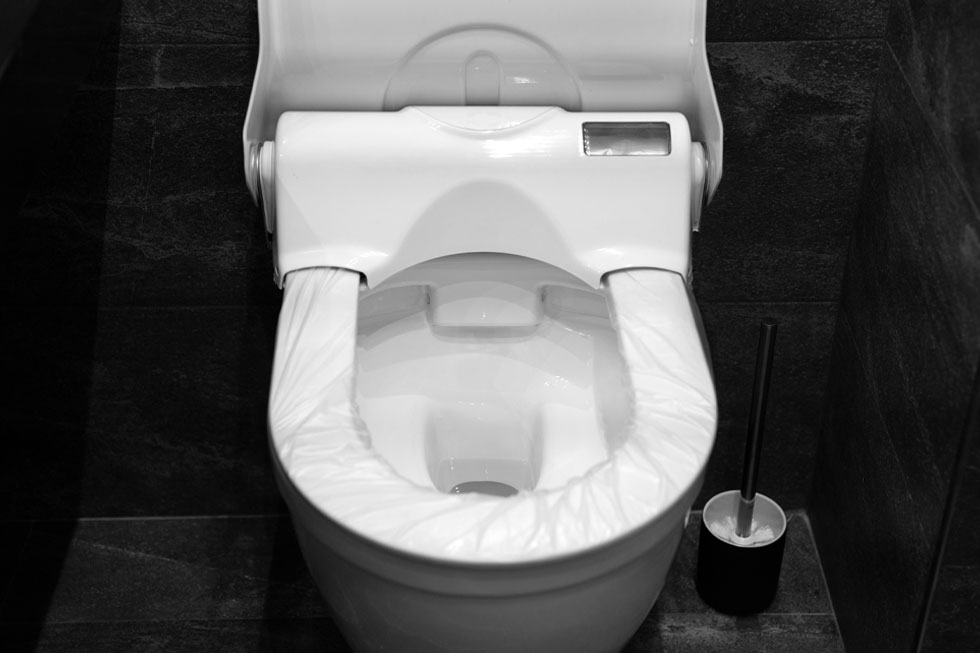As we stride into the era of advanced technology, the integration of smart solutions in various aspects of our lives is becoming increasingly prevalent. One such area that holds significant promise for the future is the incorporation of smart bathrooms in office spaces and facilities.
The convergence of technology and sanitation not only improves health and safety but also contributes to sustainability efforts, while simultaneously delivering substantial cost savings for businesses. In this article, we will explore the concept of smart bathrooms, their role in smart buildings, and the transformative impact they can have on resource management, employee well-being, and the overall bottom line.
Understanding Smart Bathrooms and Smart Buildings
Smart bathrooms, a subset of the larger smart building ecosystem, leverage cutting-edge technology to enhance efficiency, functionality, and user experience within restroom facilities. These innovations range from sensor-based faucets and automatic flush systems to smart mirrors and occupancy sensors. The primary goal is to create an interconnected and responsive environment that caters to the needs of users while optimizing resource usage and minimizing waste.
“Buildings are responsible for 40% of global energy consumption and 33% of greenhouse gas emissions.”
World Economic Forum
Smart bathrooms, a subset of the larger smart building ecosystem, leverage cutting-edge technology to enhance efficiency, functionality, and user experience within restroom facilities. These innovations range from sensor-based faucets and automatic flush systems to smart mirrors and occupancy sensors. The primary goal is to create an interconnected and responsive environment that caters to the needs of users while optimizing resource usage and minimizing waste.
Smart buildings, on the other hand, encompass a holistic approach to facility management. These structures integrate various technologies to monitor, control, and optimize building operations, including lighting, HVAC systems, security, and, importantly, sanitation facilities like smart bathrooms. By leveraging the Internet of Things (IoT) and data analytics, smart buildings can adapt to user behavior, enhance energy efficiency, and provide a safer and more comfortable environment.
Individuals typically use restrooms three to four times daily, interacting with various frequently-touched surfaces. Consequently, restrooms can be prime locations for the transmission of viruses.
Approximately 90% of buildings in North America use at least one form of smart building technology.
Sustainability in Smart Bathrooms
Resource Efficiency through Automation
One of the most significant contributions of smart bathrooms to sustainability lies in their ability to optimize resource usage. Water scarcity is a global concern, and traditional bathrooms often contribute to excessive water consumption. Smart toilets and faucets, however, are designed to minimize water wastage by incorporating sensors and advanced control systems.
Smart toilets, for example, use varying levels of water depending on the type of flush needed, thanks to dual-flush mechanisms. Additionally, sensors detect when a person is present and adjust flushing accordingly, preventing unnecessary water usage. Smart faucets employ similar technology, ensuring that water flows only when needed, and automatically shutting off to prevent overuse.
As facility managers contemplate enhancing restroom facilities to address health, wellness, and safety, the Leadership in Energy and Environmental Design (LEED) rating system provides valuable criteria for the selection of products and designs.
Intelligent Waste Management
In the quest for sustainability, waste management is a crucial aspect that smart bathrooms address with innovation. Smart waste bins equipped with sensors and artificial intelligence can categorize waste and facilitate recycling. These bins can educate users on proper waste disposal practices, encouraging responsible behaviour.
Sustainability in Every Drop
One of the most significant contributions of smart bathrooms to the environment lies in their ability to optimize water usage. Smart toilets equipped with advanced sensors can adjust flushing mechanisms based on usage, minimizing water waste. Additionally, smart faucets with motion sensors ensure that water is only dispensed when needed, preventing unnecessary consumption. These innovations not only conserve precious resources but also contribute to lowering utility bills, making sustainability an economically attractive choice.
Renewable Energy Integration
As the world grapples with climate change and the depletion of traditional energy sources, smart bathrooms can play a role in the adoption of renewable energy. The smart bathroom of the future may feature integrated solar panels, harvesting energy from natural light to power devices and systems within the space.
Passive solar heating, for example, utilizes the structural elements of buildings to capture, store, and retain solar energy, harnessing the warmth generated by sunlight streaming through windows. Although incorporating passive solar heating may require some renovation, the installation of features like brick walls or specially designed tile floors can result in substantial cost savings and a significant reduction in energy consumption.
The Role of Artificial Intelligence in Smart Bathrooms
Artificial intelligence (AI) is a driving force behind the evolution of smart bathrooms, enhancing their efficiency and user experience. AI algorithms enable predictive maintenance, anticipating and addressing issues before they become significant problems. For instance, AI-powered water leak detection systems can identify leaks early on, preventing water wastage and potential damage to the infrastructure.
AI also plays a crucial role in personalizing the user experience. Smart bathrooms can learn user preferences and adapt settings accordingly. From preferred water temperature to lighting ambiance, AI ensures that the bathroom environment caters to individual needs, enhancing comfort while minimizing resource consumption.
Business Advantages of Smart Bathrooms
Resource Management and Sustainability
One of the key advantages of implementing smart bathrooms in office spaces and facilities is the significant impact on resource management and sustainability. Traditional bathrooms often suffer from inefficiencies like water wastage, excessive energy consumption, and insufficient maintenance. Smart bathrooms address these issues through intelligent systems that monitor and control resource usage in real-time.
Water conservation is a critical aspect of smart bathrooms. Sensor-equipped faucets and automatic flush systems reduce water consumption by only activating when necessary, eliminating the risk of taps being left running or toilets being flushed unnecessarily. Additionally, these systems can provide data on water usage patterns, allowing facility managers to identify opportunities for further optimization.
Furthermore, smart bathrooms contribute to energy efficiency. Motion-sensing lights ensure that energy is only expended when needed, reducing electricity consumption. Additionally, some smart bathrooms feature climate control systems that adjust based on occupancy, optimizing energy usage for heating or cooling. By integrating these features into office spaces, businesses can make significant strides towards achieving sustainability goals.
Health and Safety Improvements
Beyond resource management, smart bathrooms play a crucial role in enhancing health and safety within office spaces. In the wake of global health concerns, maintaining sanitary conditions has become a top priority for businesses. Smart bathrooms address these concerns through touchless technology and real-time monitoring.
74% of consumers believe that a clean restroom corresponds to the overall cleanliness of the facility.
Touchless fixtures, such as sensor-activated faucets, soap dispensers, and hand dryers, reduce the risk of germ transmission, promoting a healthier workplace environment. Automatic flush systems also contribute to hygiene by eliminating the need for users to touch toilet handles.
Moreover, smart bathrooms can be equipped with occupancy sensors and air quality monitors. These sensors can assess restroom traffic, enabling timely cleaning and maintenance to ensure a consistently clean and safe environment. Air quality monitoring can detect issues such as poor ventilation or the presence of harmful particles, allowing for swift corrective action to maintain a healthy workspace.
Employee Well-being and Productivity
The implementation of smart bathrooms not only addresses operational efficiency but also positively influences employee well-being and productivity. A clean, well-maintained restroom contributes to a more pleasant work environment, fostering employee satisfaction and morale.
The touchless features in smart bathrooms not only enhance hygiene but also reduce stress by eliminating concerns about germ transmission. Improved air quality and climate control contribute to overall comfort, creating a workspace that promotes well-being and minimizes distractions. Automatic plastic toilet seat covers, for example, provide optimal hygiene by automatically replacing toilet seat covers after each use. This minimizes the risk of cross-contamination and the spreading of germs and pathogens.
Moreover, the data generated by smart bathrooms can be utilized to optimize cleaning schedules and ensure that facilities are consistently maintained. This proactive approach not only contributes to employee health but also minimizes disruptions caused by maintenance activities during office hours.
Cost Savings and Return on Investment
While the initial investment in implementing smart bathrooms and integrating them into a smart building system may seem substantial, the long-term cost savings and return on investment (ROI) are significant. The efficiency gains in resource management, reduced maintenance costs, and improved employee productivity contribute to a positive financial impact for businesses.
Water and energy savings directly translate into lower utility costs, offering businesses a tangible and ongoing return on their investment. The predictive maintenance capabilities of smart bathrooms ensure that facilities are proactively serviced, minimizing the risk of costly repairs due to neglected issues.
Standard restroom servicing protocols often lead to wasteful spending, especially in the premature refilling of soap and paper dispensers.
Moreover, the positive impact on employee well-being and productivity can result in indirect cost savings. A healthier, more satisfied workforce is likely to experience fewer sick days and higher overall productivity, contributing to a healthier bottom line for businesses.
The future is now
Transforming traditional restrooms into smart restrooms is no longer a mysterious undertaking. Smart, connected software like Onvation has been tested, implemented and successfully used in numerous commercial environments, including office buildings, airports and manufacturing facilities. Smart sensors and mobile device integration make smart restroom technology enablement seamless and easy. The opportunity to improve restroom management is here.
The future of smart bathrooms in office spaces and larger facilities represents a transformative step towards sustainable, efficient, and employee-friendly workplaces. By integrating technology into restroom facilities, businesses can achieve substantial improvements in resource management, health and safety, and cost savings. The evolution of smart bathrooms within the broader context of smart buildings signifies a shift towards creating more responsive, environmentally conscious, and user-centric work environments. As businesses increasingly recognize the multifaceted benefits of these innovations, we can expect to see the widespread adoption of smart bathrooms as an integral component of the modern workplace.






